
Contents
L
O
T
by Robert Sievert
to see large version
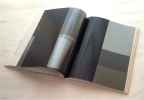
Semi-transparent pages....
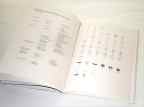
Uchikiro Nakaya:
Natural Snow:
General classification
of snow crystals
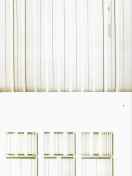
"Telefunken prototypen
2000"
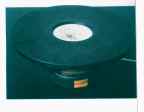
(frontispiece)
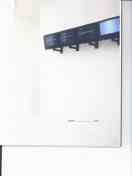
(from Telefunken, 2000)
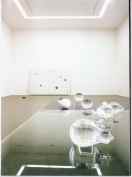
(from Kerne, 1998)
My, what a complicated book/document is this publication based on the work of Carsten Nicolai, who is interested in the visualization of sounds and other intra-sensory phenomena. It is a book of text, with many photos as well as a CD of sound and play lists. This is not an explicit breakdown of this artist's work but rather a loose compliation of essays, interviews and photographs that one might study at length to understand the very complicated oeuvre of this artist.
Included with the book are both a German and English text and a CD that outlays the complexities of the artist’s work. The book is extremely high-tech looking, with minimalist photography of sound equipment and a collection of images produced by various sounds impacting on the visual world. Citing the work of eighteenth century experimenter Ernst Chladni who created images by imposing sound waves on different materials (sand on a metal plate, for instance) Nicolai proceeds to investigate the phenomena of "seeing" sounds. Much of his work is ephemeral, momentary ... the fleeting images of sound producing visual patterns.
Nicolai has had many exhibitions. In some part of the book there is a promotion of the idea that Nicolai is breaking down the perimeters or divisions between Gallery and Club. Of course this is Europe where there is a night life / black leather hipsterism still at play. There is documentation of several of his exhibits that seem to blend minimalism with the kind of sound heard in New York in the 60’s and 70’s avant-garde music scene.
He is also a painter. It might be said that many of his efforts are the outcome of his initial investigations to expand his concept of art. He began to develop environments that contained both visuals and sound. The sound part is a collection of electronic pulses, beats, buzzes and the like creating an audio environment that seems to place one in a high-tech world where beeps and tones might convey some essential information. One thinks of hospital monitoring systems, but no, here we are in an art space and the signals are there for artistic contemplation.
His paintings are extremely cooled out ... no personal information except a preference for minimal geometric design. They resemble American minimalist painter, Agnes Martin in their restraint -- or is it lack of visual impetus? There is drive to present visual imagery but it is cut by searing intellect. His images become indistinct from the scientifically based ones produced by his experiments in visualizing sounds.
Presented in photographs are some of his ”labs” or installations. They consist of clean empty rooms with various pieces of electronic equipment that will help shape a sound or maybe will give sound a visual image. There is a photo of one of his installations which shows several speakers turned on their backs so that there sound surface is face up and covered by some sort of plate of white smooth material. one assumes that some material transforms sound played into images, maybe not. It is hard to figure out some of these installations but there are many presentations of images created by sounds.
In itself the concept seems dry and predictable and the images are not that great. What is interesting about the book is the challenge this work makes to the field of art. In effect it wipes the entire idea of art as expression off the table. The images are scientific fact, they hold no clue to passion or identity. While not as gory, they seem to hold hands with the recent art of new wave from England where carcasses are presented for esthetic viewing.
For more imformation about this text and also about some of the excellent materials they published visit: http://www.die-gestalten.de
Copyright © 2003 Robert Sievert